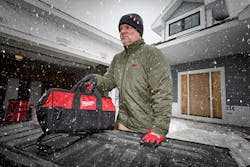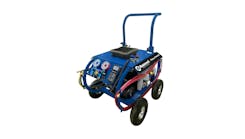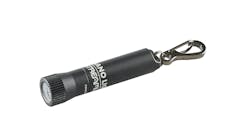The clothes on a technician’s back are just as important as the tools kept in their toolbox. While dressing for work, many factors must be taken into consideration. Does the shop have heat in the winter or A/C in the summer? How many hours per day will the technician spend on their feet? What is necessary to keep them safe not only from the elements but also from potential dangers in the shop?
As for selling workwear, mobile distributors must also keep those questions in mind, and stay up-to-date with what is new and trending. This includes items such as outerwear with temperature regulation as well as gear made from waterproof and chemical-resistant materials.
Staying on top of new products, new features, and other updates is essential to making the sale. Take a look at the latest trends and products in the apparel category, technicians’ most sought-after features for buying, and tips on what to carry and how to demo these items.
Must-have features
As with tools, technicians are looking for certain features when buying apparel. Things like mobility, durability, and comfort are at the top of their list.
Mobility
A technician’s job has them moving around constantly while they do all their checks, tests, and fixes. Owning workwear such as t-shirts, hooded sweatshirts, and jackets that are flexible enough to move with them is essential for being able to do their job.
“They’re not sitting in an office setting,” says Kaue Cavalcante, senior product manager for Milwaukee Tool. “They’re very active, and they need clothing that’s not going to be a hindrance or an annoyance for them throughout the day.”
Comfort
“A comfortable worker is a more productive worker,” says Charlie Arroyo, general manager for Redback Boots U.S.A.
Technicians want clothing that doesn’t chafe or rub on their skin. Long days in the shop while constantly moving from one place to another requires apparel that is soft, so any frequently repeated motions don’t cause blisters, hot spots, or other discomforts.
Also, body temperature regulating products such as heated hoodies and jackets or breathable t-shirts with sweat-wicking technology are key to keeping technicians comfortable in the shop no matter the season.
Matt Rivera, national account manager for Makita U.S.A., discusses the unique body temperature control garments Makita has to offer.
“We have a wide range of heated gear in both 18V and 12V,” he says. “By using our 18V platform … you can get up to 35 hours of run time on a single battery by running it on low. Our 18V jacket offers five heating zones: left chest, right chest, the back, and both pockets, so it’s going to heat your entire core which is key in staying warm.”
“We [also] have jackets that include fans [and] are UV resistant,” Rivera adds.
Cavalcante shares what’s happening with Milwaukee Tool’s new heated gear.
“[In] 2019, we are adding to the Axis lineup with a series of job site shells that are meant to be paired with the Axis Heated Jacket,” he says. “We’re [also] introducing our HydroBreak Rain Shell, which is our first 100 percent waterproof garment for Milwaukee tool. In addition to the rain shell, we’re introducing our GridIron Work shell, which is a [heavily] insulated jacket made from our custom gridiron proprietary material. [This] specific shell … is meant to be paired with the Axis Heated Jacket for [extremely] cold conditions. The Axis Layering System, as we call it, is really the new … addition to the lineup.”
Durability
Technicians want a wardrobe that will stand the test of time. They want their jackets, work pants, boots, etc. to last for a while regardless of the conditions they work in. Clothing and outerwear that easily rips when it gets snagged on things or no longer functions due to technology updates are a waste of money. It becomes frustrating when items that should be longer-lasting need constant replacement.
Why apparel matters
“There’s a productivity aspect … that we don’t often attribute to clothing, but if the apparel that [technicians] are wearing becomes a hindrance … it’s distracting from the task at hand,” Milwaukee Tool’s Cavalcante says.
What they wear may not seem like a big deal, but when wearing the appropriate workwear, a technician’s focus won’t be split between their work and their discomfort. Having proper attire helps to increase efficiency and productivity.
Protection is another important factor. Not only are technicians looking for a shield against UV rays, wind, rain, and the cold, they are also looking for protection from everyday risks. Automotive maintenance and repair professionals may need their workwear to be flame-resistant or chemical-resistant as well.
“This would be [one product category] where a mobile [distributor] could go to a shop owner and [have] a reason to maybe get this to be a shop purchase as opposed to a tech purchase,” Rivera says.
Having the proper apparel can help prevent accidents and injuries from occurring and keep the shop running smoothly.
Trends in apparel
Staying on top of the trends will give your sales pitch an edge. Be on the lookout for new colors and patterns. Though a small change, it’s one that always gets people excited. Seeing their favorite products with a fresh, new look makes the gear a tempting buy.
Mobile distributors in midwestern states or any region that experiences all four seasons should pay attention to products that layer well together. Offering base layers (t-shirts, long sleeves, thermals), mid-layers (vests, hoodies, lighter jackets), and outer layers (heavier jackets) could earn some extra sales.
Additionally, people and companies alike are looking for ways to lessen their carbon footprint and buying quality attire made from sustainable materials is a great way to do just that.
“Utilizing sustainable raw materials is the way of the apparel world these days, and our viscose from bamboo hosiery utilizes the world’s oldest grass in the construction of our socks,” says Redback Boots’ Arroyo.
How to make the sale
Pay attention to what products sell well and which don’t. Are the products that aren’t selling visible to customers? Do they make sense for the season? Do technicians have a need for that particular item?
Stock some smaller gear like hats, socks, and gloves. These items tend to be worn out faster or get lost more easily. They also make for the perfect giveaway or freebie item to throw in with other purchases. Giving customers a sample of the product increases the likelihood they will coming back for more.
Displaying the items can be a bit tricky, especially when it comes to t-shirts, hoodies, or heated jackets. The fix is quite simple though: buy a hanger. Hang up items where customers can see them; they might be a conversation-starter.
The most important aspect of selling apparel – of selling anything – is to educate customers.
“A lot of times … [customers will] just keep buying the same thing over and over until someone tells them a significant reason why they should pivot and look at something different,” Milwaukee Tool’s Cavalcante says.
Let customers know what makes the apparel products you’re selling better than the $5 t-shirt from Wal-Mart, or the work boots they found on Amazon. What features does an item have that makes it worth switching from the customers' usual buys?
Helping customers understand the significance of a heated jacket or a more durable pair of socks will encourage sales.



